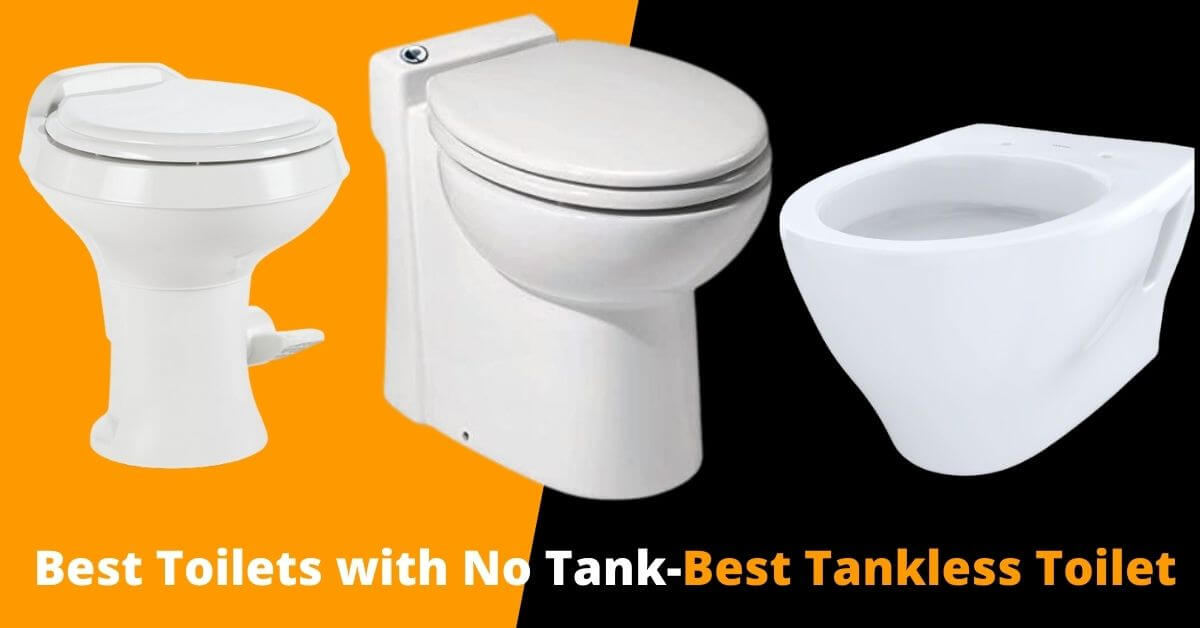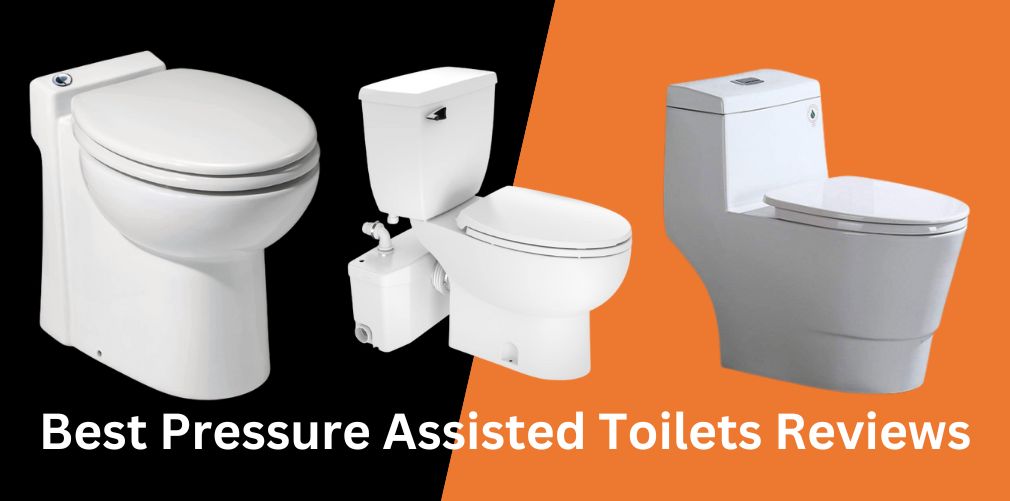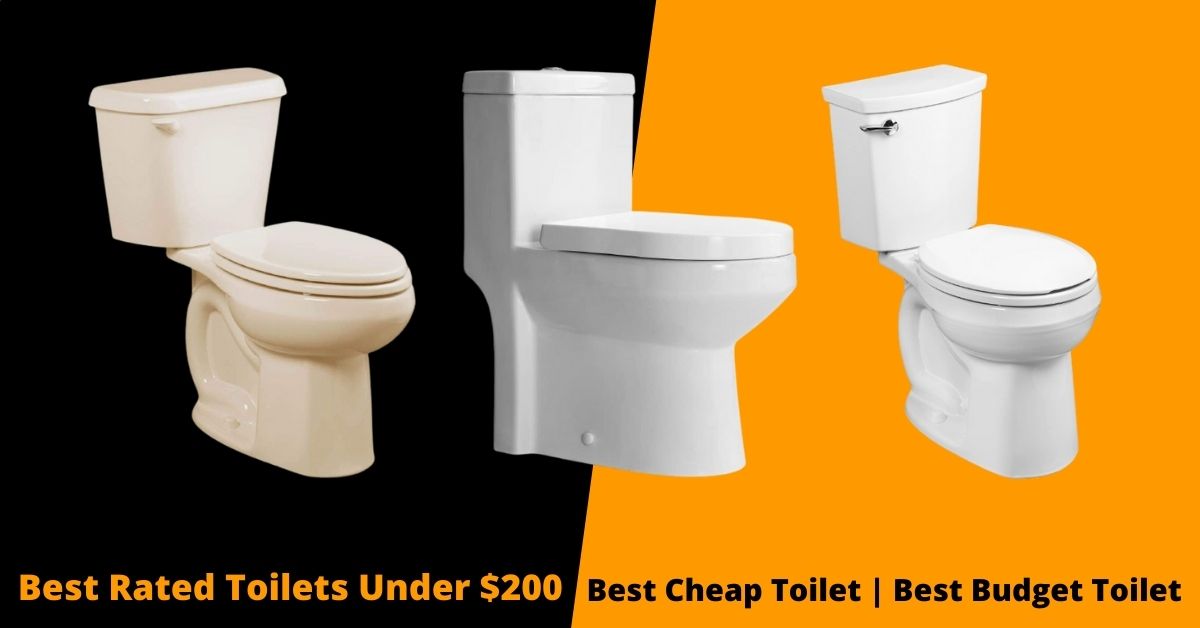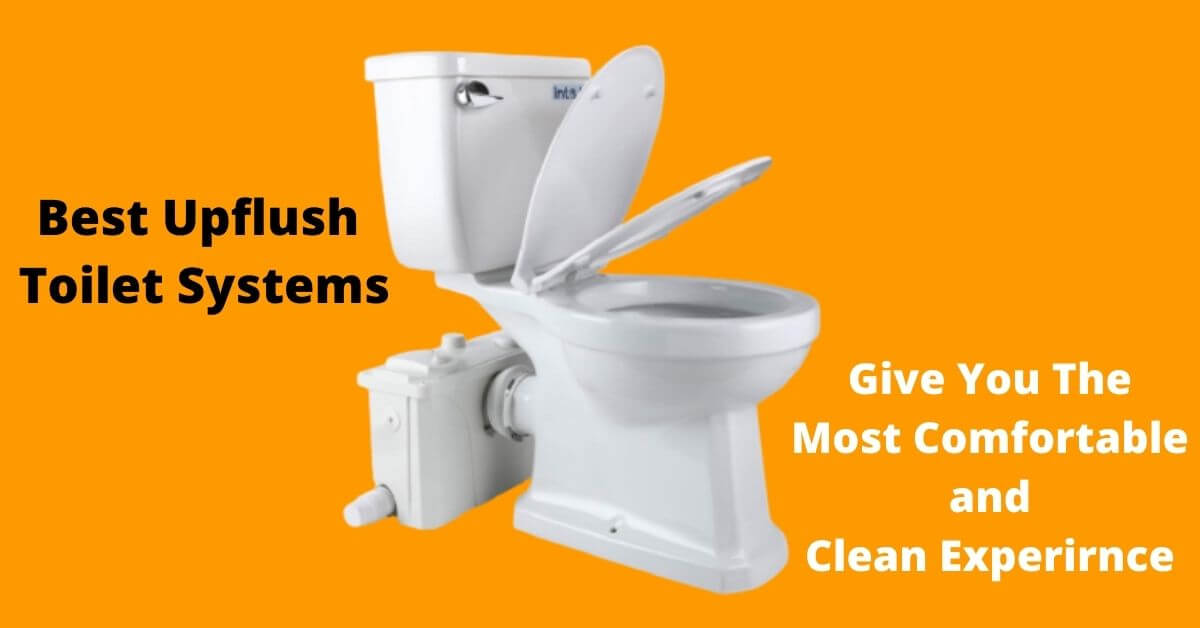The toilet is an essential fixture in any modern bathroom, and over the years, it has undergone several transformations in terms of design and functionality. One of the latest innovations in the world of toilets is the Toilets with No Tank, also known as Tankless Toilet and wall-mounted toilet.
Unlike traditional toilets with tanks that hold water for flushing, tankless toilets have their flushing mechanisms hidden within the wall. This design not only saves space but also offers a more modern and minimalist look to any bathroom.
In this article, we will explore the features, advantages, and disadvantages of no tank toilet to help you determine if this type of toilet is right for your bathroom needs. SO, Keep reading…!
As an Amazon Associate, I earn from qualifying purchases.
What is a Toilet without a Tank Called?
A toilet without a tank is commonly referred to as a tankless toilet or a wall-mounted toilet. These types of toilets are designed to be mounted directly onto the bathroom wall and have their flushing mechanism hidden within the wall. Tankless toilets are becoming increasingly popular in modern bathrooms due to their sleek design, compact size, and water-saving capabilities. They also tend to be easier to clean and maintain than traditional toilets with tanks.
Can You Use a Toilet without the Tank?
The answer to whether or not you can use a toilet without a tank depends on the specific type of toilet in question. Traditional toilets typically have a tank that holds water, which is then used to flush waste down the drain. However, there are also toilets available that do not have a tank, known as tankless toilets or flushometer valve toilets.
If you have a traditional toilet without a tank, then you would not be able to use it without a tank, as the tank is necessary to hold the water that provides the flushing mechanism. Without a tank, the toilet would not be able to flush properly.
On the other hand, if you have a tankless toilet or flushometer valve toilet, then you do not need a tank to use it. These types of toilets rely on a pressurized water source to flush waste down the drain. They are commonly used in commercial settings such as public restrooms, but can also be found in some residential homes.
Important Note: If you are considering installing a tankless toilet, you may need to make modifications to your plumbing system to accommodate the different flushing mechanism. It is recommended that you consult with a professional plumber to determine the best course of action for your specific situation.
Our Top Pick On Toilets With No Tank
[wptb id=471]
Top 7 Best Toilets With No Tank: Trandying This Season!
01. Saniflo 023 – Sanicompact – Tankless Toilet
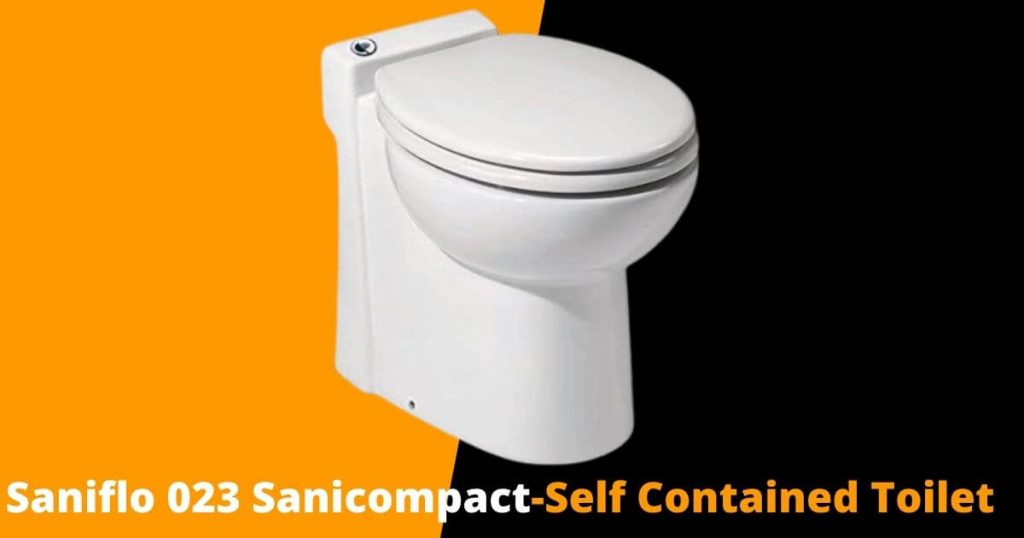
The Sanicompact is a high-priced tankless toilet that is gaining popularity in residential settings. It not only works well in tiny spaces, but it also performs all of the functions of a toilet and is better prepared for waste disposal.
The Sanicompact toilet utilizes a lot less water each flush than other big-name brand toilets on the market.
If you’re wary of paying a high water bill due to inefficient toilets, you’ll appreciate this model’s automatic capacity to use as little water as possible. This characteristic lasts the whole life of the gadget, with no degradation due to wear and tear on the parts.
The fact that it can manage the effluent from both a lavatory and a sink demonstrates how strong the flushing motion is on this toilet. A simple press of the tab at the top of the bowl activates the built-in macerating pump cycle, which is one of the best waste removers in the market.
This toilet not only employs more advanced technology but also eliminates the tank and replaces it with a self-contained macerating device that requires just 1 gallon of water every flush. It eliminates waste more effectively without clogging, and it does this without the use of a tank.
Saniflo 023 Toilet Specifications:
- 1 gallon of water for every flush
- Dimensions: 18¼ “ X 14¼” X by 19½”
- Height of the bowl: 18.5 inches
- Weight: 62.2 pounds
- Comes with warranty
Pros:
- 2 years warranty
- 1 gallon of water utilized for every flush
- Tankless toilet saves water
- Designed for smaller bathrooms
- Gets rid of the waste easily
Cons:
- Difficult to clean
- Other Saniflo models are better
02.Dometic 300 Toilet – Standard Height Toilet – Tankless Toilet

This toilet is available in White and Bone finishes and is designed for household use. It’s a compact, lightweight standard-height toilet that works well for most campers and small recreational vehicles.
The bowl emptying flushing operation of the Dometic 300 Series is efficient. This is made possible by the gravitational force of the flushing mechanism.
The Dometic 300 isn’t all that different from a regular toilet. This type comes with the most sought-after extended bowl. Unlike compact toilets, elongated toilets are believed to be more relaxing because they support your thighs.
The bigger aperture, which reduces spillage and splashback, is especially appealing to men.
This toilet’s normal height is another feature that your family could like. The Dometic 300 Series features an 18-inch seat height. This height makes it an excellent choice for elderly people who may have difficulty sitting and standing from toilets that have low heights.
The lightweight design of the Dometic 300 Series toilets is one of its most notable features. A standard one-piece commode may weigh up to 100 pounds. This is when this model comes in handy. The 8.2-pound weight of this toilet is also worth mentioning. This function ensures that the vehicle does not gain excessive weight.
Dometic 300 Toilet Specifications:
- Weight: 8.25 pounds
- Dimension: 19.25 x 15 x 20 inches
- Triple-jet wash
- Water level can be adjusted
- A residential-size seat
Pros:
- Seat with a longer length
- The elderly and the tall are accommodated easily
- The flushing system is water efficient
- It uses 0.5 liters for every flush
- Lightweight and simple to set up
Cons:
- The foot pedal is not ideal
- Physically challenged people won’t be able to use the flush
3.Toto CT418FG – Wall Hung Toilet – Dual Flush Toilet – Toilet With No Tank
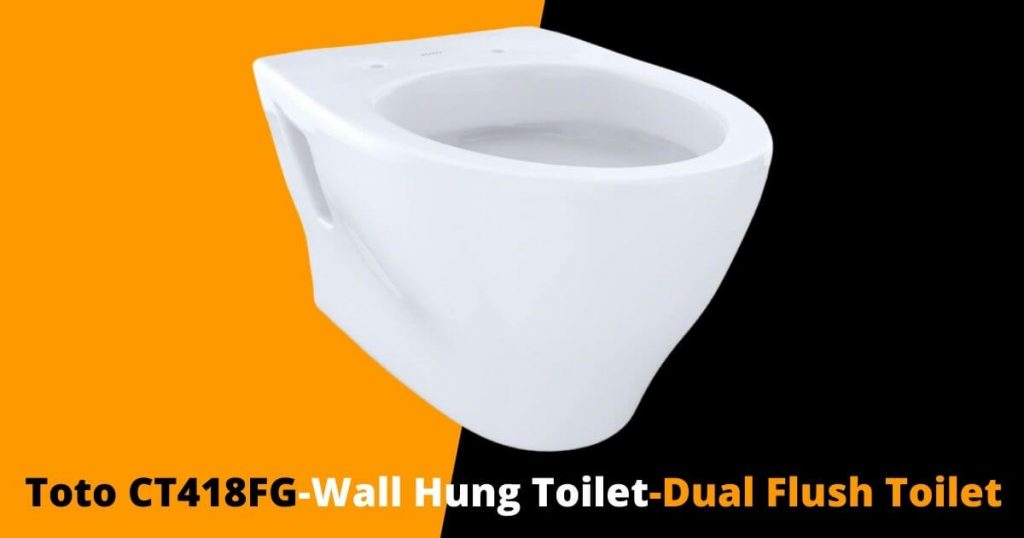
Toto is one of the most well-known toilet manufacturers in the world. The quality of this Japanese company’s toilets is excellent, and their functioning is trustworthy. The Toto Aquia Dual-Flush Wall-Hung Toilet is no exception.
You’ll be pleased to learn that the toilet boasts some of the most advanced performance and convenience features available.
The toilet is one of the tiniest wall-mounted toilets available today, in addition to having an appealing style. For half bath proportions in your small bathroom, you may also pick a toilet sink in one.
When it comes to flushing performance, the device lives up to the manufacturer’s claims. TOTO’s state-of-the-art Dual Max Flushing technology is responsible for the toilet’s strong flushes.
This toilet has a comfortable seat height, as mandated by the Americans with Disabilities Act. This makes it simpler and more convenient for the elderly and disabled to sit on it and get up from it. The device also has an extended seat, which makes it even more pleasant to use.
While not the most powerful flushing system available, it has shown to be useful at moving solid and liquid waste. This technology, although designed for increased flushing power, also helps you save water.
Toto CT418FG Wall Hung ToiletSpecifications:
- Limited warranty
- Weight: 66.5 pounds
- Dimensions: 23.8 x 15.8 x 17.5 inches
- Skirted design
- Special coating for better cleaning
Pros:
- The extended seat is comfortable to sit in.
- It has a design that is at a comfortable height.
- Uses water-saving dual flush technology.
- The manufacturer’s Dual-Max flush system is included.
- Provides excellent value for money.
Cons:
- Toilet tank is not available
- It does not come with a seat
4.TOTO MS992CUMFG – Automatic Flush Toilet – Tankless Toilet
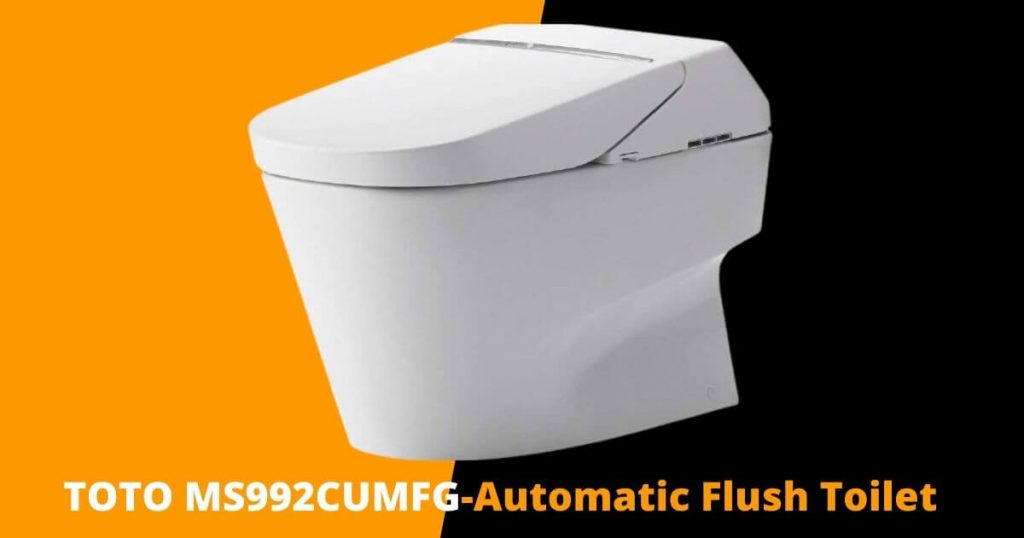
When you first look at the Toto Neorest, the lack of a conventional tank will attract your attention. The second thing you will see is that it immediately lifts the lid for you as you reach the toilet. That’s true, this toilet can tell when you’re about to approach it.
Did we mention that you may choose the temperature of the wash water? Or that you have the option of using a pulsing feature? Because both of those alternatives are available to you.
Another important aspect is that the bidet wand disinfects itself both before and after each use. Then you press the dryer button, which sends the warm air out to dry you off. When you get up, the toilet flushes and the lid closes instantly.
The majority of flushometers work at a pressure of around 20 pounds per square inch. Because they’re connected directly to a supply line and don’t have a tank to fill, you can flush a tankless toilet several times without having to wait.
You may be concerned that tankless toilets are noisier than regular toilets, but the Toto Neorest is exceptionally quiet. Before and after each usage, the Neorest disinfects the bidet wand. There are no harsh chemicals to be concerned about because it uses tap water.
TOTO MS992CUMFG Tankless Toilet Specifications:
- 1 gallon of water per flush
- Remote control system
- Jet flushing system
- Features a nightlight
- Electrolyzed water per flush
Pros:
- Comes with a bidet
- The bidet uses warm water
- The lid opens and closes automatically
- Features a gentle night light
- Seat is pre-warmed
Cons:
- Needs a high-pressure line
- Expensive to install
5.WOODBRIDGE B0960S – Smart Bidet seat Toilet – Remote Control Toilet
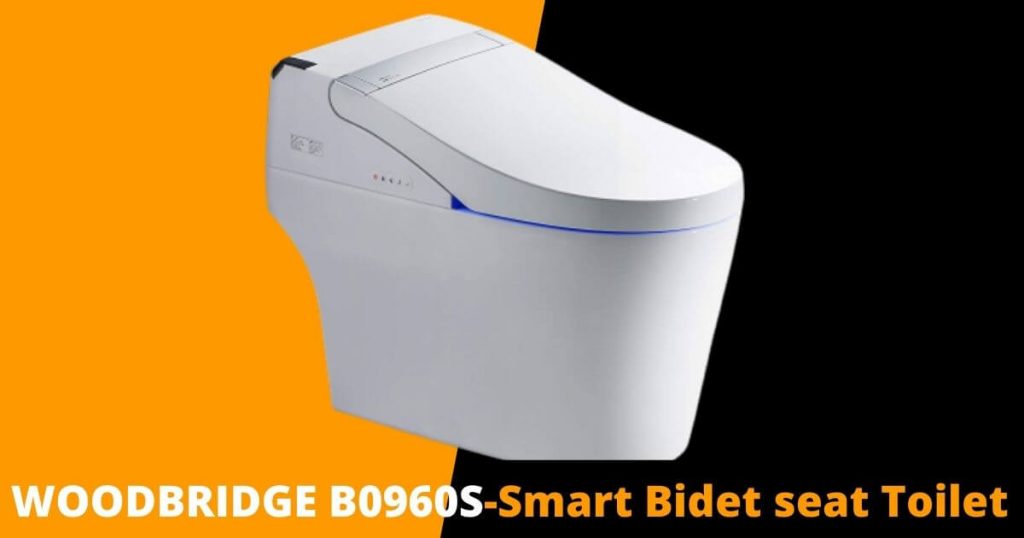
This toilet is a popular choice for practical homes because of its sleek design and affordable pricing.
Numerous noteworthy features of this product will entice you to give it a try. For starters, it has several hands-free features that ensure its sanitary use.
It includes an automated flush and lid control system, so you don’t have to touch anything gross or risk spreading germs from your hands to the toilet’s most commonly touched parts.
It has features that may be adjusted to make it more pleasant to use. You may control the temperature of the water, dryer, and seat to ensure that you don’t get too hot or cold when using the toilet. You may also adjust the water spray pressure for added convenience.
Its air filtration feature is very useful, particularly in communal bathrooms. It pulls in the air and utilizes strong air filters to keep smells from lingering in your bathroom. Users can go one after another without having to wait for unpleasant odors to disappear.
Furthermore, the interior and outside of this toilet are also glazed, ensuring that excrement does not stick. The lack of grooves and corners means that minimum cleaning is required regularly. This toilet flushes softly, unlike other loud siphon jet toilets.
Remote Control Tankless Toilet Specifications:
- Auto opening and closing
- Weight: 114.8 pounds
- Dimensions: 32 x 19 x 26 inches
- Automatic air freshener system
- Built-in LED night light
Pros:
- Compact design for small areas.
- Flush conserves water.
- Aesthetically pleasing
- It prevents waste from sticking.
- Affordably priced
Cons:
- Does not have the best features like other toilets
- Not as good as other models of the same brand
6.Toto MS920CEMFG – Dual Flush Toilet – Tankless Toilet
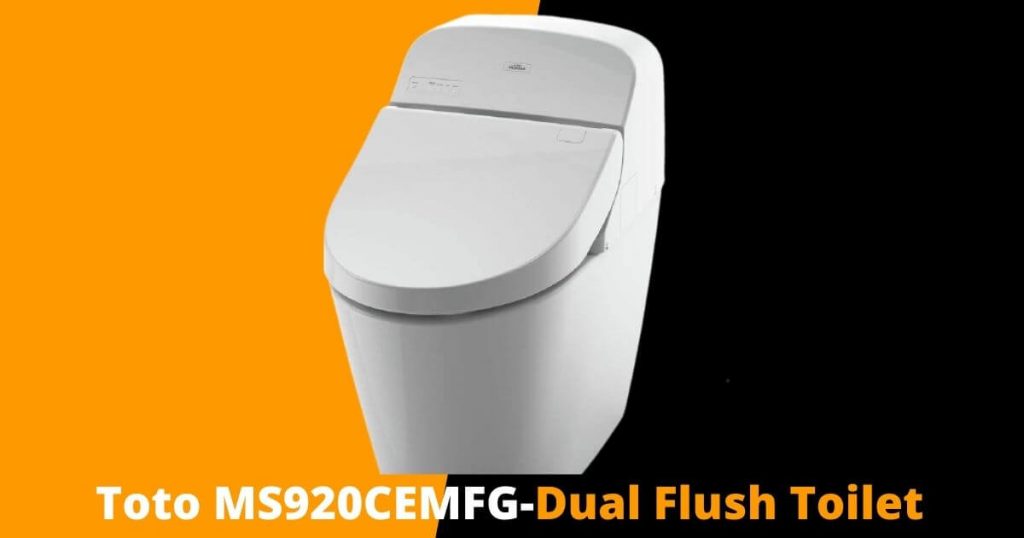
Toto announces the Washlet G400, an innovative and ecologically friendly washlet toilet from one of the world’s most famous toilet companies. This is a one-of-a-kind situation. These toilets are nothing like the ones you’re used to. There’s nothing more you could wish for in a toilet with so many functions and it is also environmentally friendly.
There’s no denying that the Toto Washlet G400 is a toilet with a lot of features. You may or may not have used a toilet like this one before, so don’t be concerned if you don’t know how to use one.
You’ll understand why so many people have replaced their basic toilets for this tankless toilet after using it a few times.
A Toto G400 bidet is provided and it serves a variety of purposes beyond those of a toilet. The bidets include a range of comfort-enhancing features, including heated seats and air fresheners.
It also has a lot of appealing characteristics. It complies with the Americans with Disabilities Act and is very energy-efficient. Any part of the toilet may be readily cleaned.
When you approach the toilet, the seat lowers and elevates automatically, and it shuts automatically when you leave. As soon as you sit in a Toto seat, it begins to heat up. There are five different heat levels to select from.
Toto MS920CEMFG Toilet Specifications:
- Weight: 102.01 pounds
- Dimensions: 28.62 x 15.37 x 26.93 inches
- Made with ceramic
- 1.28 gallons of water per flush
- Automatic flush
Pros:
- The lid opens and closes automatically
- It has a self-cleaning function
- It’s eco-friendly
- The toilet comes with an automatic air freshener
- It has three cleansing functions.
Cons:
- Too many features
- Not simple to use
7.KOHLER K 6299 – Wall Hung Toilet – One piece Toilet – Tankless Toilet
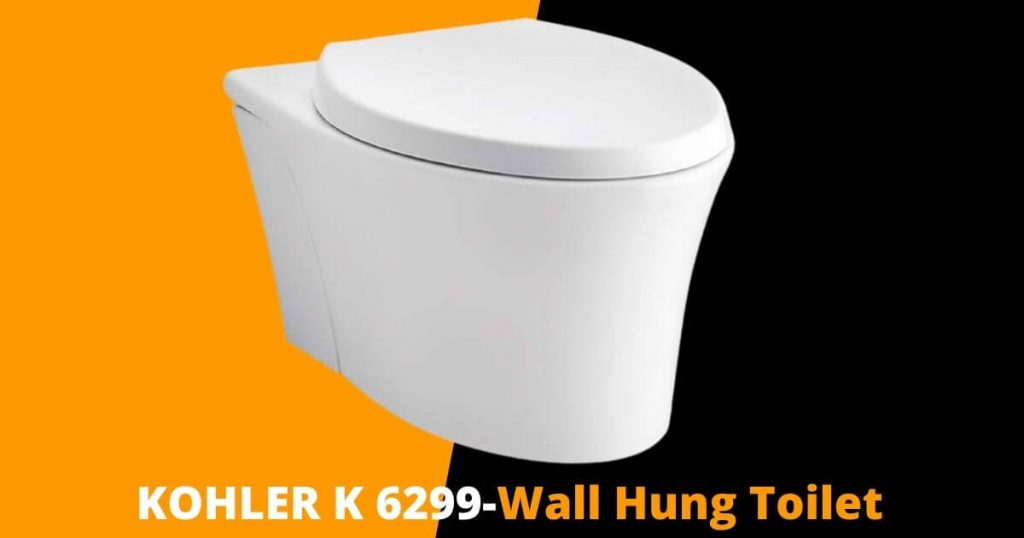
This is a fantastic wall-mounted toilet from Kohler, one of the most well-known toilet manufacturers. While a wall-mounted seat isn’t for all, this one-piece item is quite attractive. A dual-flush activator allows you to select the amount of water you wish to use.
You may use 0.8 gallons for a half-flush to handle liquid waste or 1.6 gallons for bulk trash in the K-6299 Veil. This allows you to conserve water as well.
It’s worth noting that the higher mounting heights are entirely ADA-compliant, so if you set the seat to a comfortable seating height, your company or house will meet those criteria.
The Veil has a wide flush valve, which means the gravity-aided flush is incredibly strong while using such a tiny quantity of water.
This toilet may be wall-mounted at virtually any comfortable height when utilized with a Kohler in-wall tank carrier. If you have little children, a lower height of 15-3/8 inches is recommended.
You can put it as high as 28-1/2 inches above the floor if you are old or install it for someone who is physically challenged. This is certainly a turning point for you if you’re tall. You won’t have to lean down with your knees about your shoulders to use the restroom.
KOHLER K-6299 Wall Hung Toilet Specifications:
- Weight: 53.5 Pounds
- Dimensions: 21 x 15.13 x 13.88 inches
- Made with ceramic
- Wall-hanging option
- No batteries required
Pros:
- Easy to clean and manage
- It can be installed flexibly
- The elongated design ensures comfortability
- Compact design
- It fits into the tiniest bathrooms
Cons:
- It’s expensive
- The toilet is difficult to repair
Why do Some Toilets Not have Tanks?
Some toilets do not have tanks because they use a different type of flushing mechanism. Traditional toilets have a tank that holds water, which is then used to flush waste down the drain. However, tankless toilets, also known as flushometer valve toilets, use a pressurized water source to flush waste.
Tankless toilets are commonly used in commercial settings such as public restrooms because they are more durable and require less maintenance than traditional toilets. They also use less water per flush, which can lead to significant cost savings over time.
In addition, tankless toilets are often preferred in areas with low water pressure, as the pressurized water source ensures a consistent and powerful flush. They also tend to have a sleeker and more modern design, which can be attractive in residential settings.
While tankless toilets may require modifications to the plumbing system and may have a higher upfront cost than traditional toilets, their benefits in terms of durability, water efficiency, and design may make them a worthwhile investment for some homeowners and businesses.
Can I Install a Tankless Toilet at Home?
Yes, you can install a tankless toilet in your home. Tankless toilets, also known as “wall-hung toilets,” are becoming more popular because they take up less space and use less water than traditional toilets. They work by connecting directly to the plumbing system and using a flushing mechanism that doesn’t require a tank to hold water.
However, installing a tankless toilet requires a bit more expertise and skill than installing a traditional toilet. You’ll need to have some knowledge of plumbing and be comfortable working with pipes and fittings. It’s also important to ensure that your plumbing system is compatible with a tankless toilet before making any changes.
NOTE: If you’re not comfortable with plumbing work, it’s best to hire a professional plumber to install your tankless toilet for you. They’ll be able to make sure that everything is installed correctly and that your plumbing system is able to handle the new toilet.
Tankless Toilet Plumbing Guide
If you are considering installing a tankless toilet in your home, it’s important to understand the plumbing requirements and installation process involved. Here’s a guide to help you get started:
Materials you will need:
- Tankless toilet
- Mounting bracket
- Screws
- Wax ring
- Toilet supply line
- Adjustable wrench
- Screwdriver
- Level
- Silicone sealant
- Hacksaw
Step 1: Prepare the installation area
Before you start installing the tankless toilet, you need to prepare the installation area. Turn off the water supply to the toilet, and remove the old toilet and any mounting hardware. Clean the flange where the wax ring will be placed, and make sure it is level.
Step 2: Install the mounting bracket
Attach the mounting bracket to the wall using screws and a level to ensure it’s perfectly straight. Make sure the bracket is securely fastened to the wall.
Step 3: Attach the toilet bowl to the mounting bracket
Place the wax ring on the flange, and carefully lower the toilet bowl onto the wax ring. Press down firmly to ensure a good seal. Then, attach the bowl to the mounting bracket using the screws provided.
Step 4: Connect the toilet supply line
Attach the toilet supply line to the water supply valve, and then attach the other end to the toilet’s inlet valve. Use an adjustable wrench to tighten the connections, but be careful not to overtighten and damage the fittings.
Step 5: Adjust the height of the toilet bowl
Use a hacksaw to cut the waste pipe to the correct height, so the toilet bowl sits flush against the wall. Then, adjust the height of the toilet bowl by turning the mounting screws on the bracket until it’s level.
Step 6: Apply silicone sealant
Apply silicone sealant around the base of the toilet bowl where it meets the wall. This will help prevent any water leaks.
Step 7: Test the toilet
Turn on the water supply and flush the toilet to check for leaks. Check the bowl and connections thoroughly for any signs of leaks or water damage.
Congratulations, you have successfully plumbed a tankless toilet! Remember to maintain your toilet regularly, including cleaning the bowl and checking for any leaks or malfunctions.
No Tank Toilet Maintenance Guide:
Tankless toilets require regular maintenance to ensure they function correctly. Here are some maintenance tips to follow:
- Clean the bowl regularly: The bowl should be cleaned with a non-abrasive cleaner to prevent stains and buildup.
- Check for leaks: Regularly check for leaks around the toilet and water supply line. Any leaks should be repaired immediately to prevent water damage.
- Check the water pressure: Tankless toilets require a certain water pressure to function correctly. You should regularly check the water pressure to ensure it is within the manufacturer’s recommended range.
- Check the fill valve: The fill valve should be checked periodically to ensure it is functioning correctly. If it is not, it should be replaced.
Toilets with No Tank Troubleshooting Tips:
If your tankless toilet is not functioning correctly, here are some common troubleshooting tips:
- Check the water supply: Make sure the water supply line is open and providing enough water pressure to the toilet.
- Check the fill valve: The fill valve may be malfunctioning and preventing the toilet from flushing correctly. Check it and replace it if necessary.
- Check the drainpipe: The drainpipe may be clogged or not sloping correctly. You may need to unclog it or adjust it to ensure proper waste removal.
- Check for leaks: Any leaks around the toilet or water supply line should be repaired immediately.
Tankless Toilet With Bidet
A tankless toilet with bidet is a modern bathroom fixture that combines the functionality of a toilet and a bidet in one compact unit. Unlike traditional toilets that rely on a tank of water to flush waste, tankless toilets use a direct water supply to flush waste, which saves water and space. They also feature built-in bidet functionality, which allows for more hygienic cleaning after using the toilet.
The bidet function of a tankless toilet typically includes a wand or nozzle that extends from the unit to provide a stream of water for cleaning. The temperature and pressure of the water can often be adjusted to suit personal preferences, and some models even come with additional features like heated seats, air dryers, and deodorizers.
One of the main benefits of a tankless toilet with bidet is that it can help reduce the amount of toilet paper used, which is more eco-friendly and can save money in the long run. It also provides a more thorough cleaning experience than using toilet paper alone.
Installation of a tankless toilet with bidet can be more complicated than traditional toilets, as it requires both a water supply and electrical connection. It’s important to hire a professional plumber to ensure proper installation and avoid any potential issues with leaks or electrical malfunctions.
What is The Meaning of Toilet No Tank?
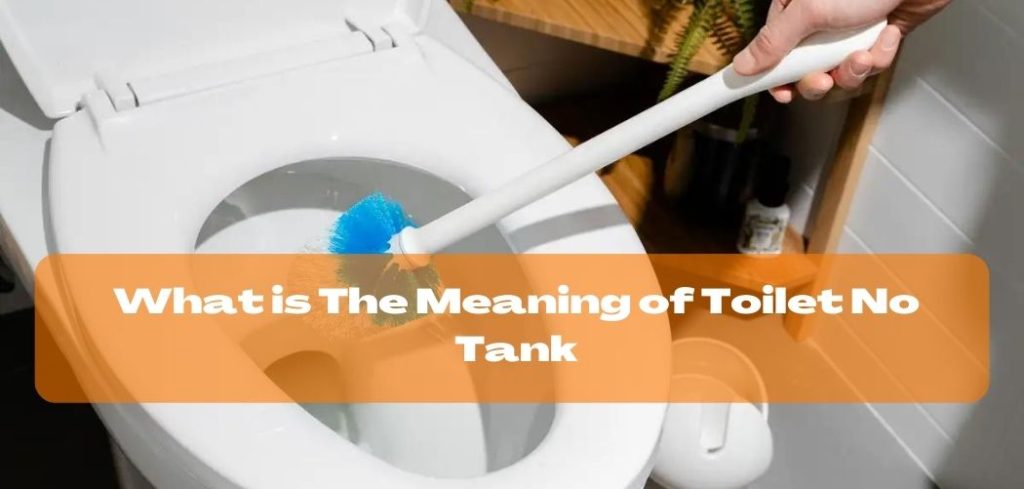
The meaning of toilet no tank is that there is no tank inside the toilet.
This means that water will continuously run through the pipes, and when you flush your toilet it will release the fixed amount of water for flush.
This is due to the fact that there is now a new toilets invention on the market that is ‘toilet no tank’ with an internal flushing system, which eliminates this issue.
These types of toilets are also called “tankless toilets” “toilet with on tank” “toilet no tank” “no tank toilet” “toilet without tank” ETC.
No Tank Toilet – What are they?
If you’re in need of an alternative bathroom system, take a moment to consider the no-tank toilet. This invention saves a considerable amount of water by not utilizing flushing systems and instead uses push-button electric controls for the water and waste.
No tank toilets are durable, easy to install and clean, operate quietly, and aren’t harmful to the environment.
They come in a variety of shapes, sizes, and styles that can be adjusted around your current toilet or fit nicely into your present bathroom space. No-tank toilets are also quick and easy to install, so you’ll soon be flushing without the expense, disruption, or mess of a traditional tank-style toilet.
No Tank Toilets – Advantages
No Tank Toilets – Advantages No tank toilets don’t hold the waste for long periods of time the way that traditional toilets do. This is great for people who prefer more immediate results over sitting around in a dirty environment.
No tank toilets don’t require batteries or electricity on a regular basis as they tend to be self-powered. You can use the toilet when nature is calling and not have to worry about searching for batteries, shutting down the power to the bathroom, and risking a bad smell.
No tank toilets are environmentally friendly, as they require a lot less water than conventional toilets. They can reduce your water usage from 50% – 75% less than traditional tank-type toilets. Traditional tanks sit on top of the toilet and require some sort of flushing mechanism in order to cleanly dispose of waste.
Waste disposal takes a lot of water, normally anywhere from one gallon to five gallons per flush; with these toilets, however, you’re able to get rid of a lot more waste with less water every time.
What is a Tankless Toilet?
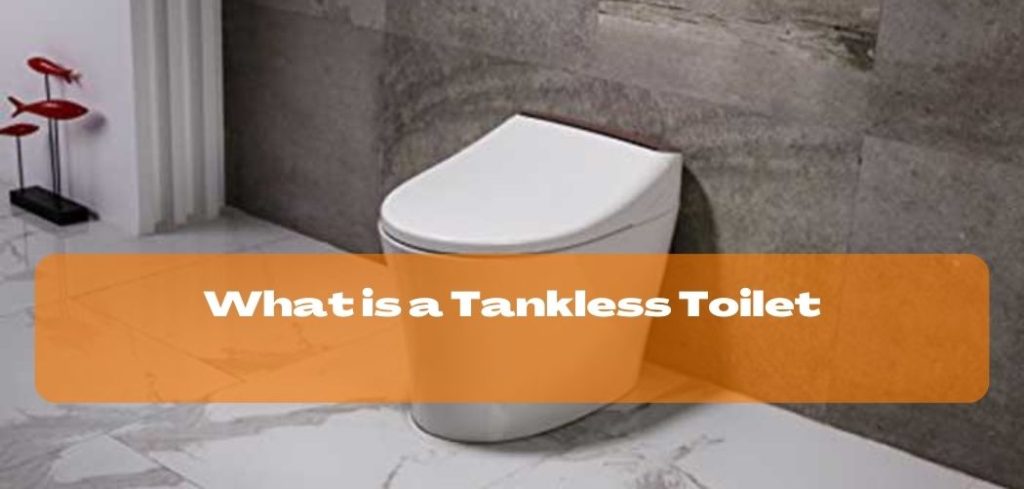
A tankless toilet is a type of toilet that does not have an underground storage tank. Tankless toilets are also known as demand-type or instantaneous water heaters.
They use less energy than traditional tanks, and they can be more environmentally friendly if you live in an area where there are strict water conservation laws.
A typical residential home will only need one to two gallons per flush with this toilet design.
The following blog post provides information about how these toilets work and what the benefits are for homeowners.
Who want to conserve their resources while still getting good performance from their plumbing fixtures. It’s important to know these details before purchasing one, which is given below!
What are The Dimensions of a Tankless Toilet?
These toilets use less water and can be installed in areas without access to plumbing. They also have a variety of features designed for comfort, such as heated seats and warm air dryers.
The dimension measurements for this type of toilet include length – 26 1/2 inches; width – 17 1/8 inches; and height – 18 7/8 inches.
Tankless toilet dimensions vary depending on the brand and model. The standard size is around 28 inches by 26 inches, but it can be larger or smaller depending on the design.
If you’re looking to buy a tankless toilet, be sure to measure your space carefully to make sure it will fit! Learn more in this post about these modern tankless toilets!
Tankless Wall Mounted Toilet
A tankless wall mounted toilet is a great bathroom option for small bathrooms or any home with limited space.
Tankless toilets are also known as water-saving toilets because they do not require the use of a tank to store water.
They work by heating up cold fresh water on demand and using it to flush away waste.
Many people opt for this type of toilet because it’s more environmentally friendly than an old-fashioned model that uses lots of water, electricity, and chemicals.
Because they don’t have tanks, you can mount them right against the side of your wall without worrying about how much space you’re taking up in your bathroom!
Tankless Toilets for Small Bathrooms
If you have a small bathroom, there’s no need to worry because tankless toilets are the perfect solution for you!
If you are in need of a new toilet for your small bathroom, the tankless models might be the perfect solution.
These toilets can help to free up valuable space in tight bathrooms because they do not require a large amount of water storage.
They also tend to use less electricity than traditional models and they don’t have an exposed water supply that can create potential safety hazards for children or pets if it gets knocked over.
The main downside is that these types of toilets are more expensive than their counterparts.
But this investment will pay off with time since you won’t have to continually replace old tanks which leak on your flooring or get clogged by hairballs from cats!
If you’re looking for a more sustainable option that will save your natural resources and your wallet, then this is it!
How do Tankless Toilets Work?
Tankless variants, unlike traditional toilets, do not have a tank; instead, they are linked directly to a water supply pipe that provides a controlled water flow for each flush.
Furthermore, most manufacturers are designing tankless toilets with technology that makes them simple and enjoyable to use.
A tankless toilet is a type of electric toilet that can flush when you need it to. It does not have a water tank, but instead uses the pressure from the hot and cold water in your home.
When you flush the toilet, cold water is sent to a heating coil that heats it upon demand. The hot water then goes into the bowl and flushes everything away!
If you’re considering replacing your current toilet with a new one, consider what kind of features you may want in a modern design – there’s plenty to choose from!
You can find out more information about how to shop for a tankless toilet above and below.
How to install a tankless toilet
Check that the storage facilities of your house satisfy the criteria before you install a tankless toilet. If not, the toilet may still be updated by replacing plumbing, but the installation costs are significantly increased. When you build a new home, prepare to add big supply lines that work with a toilet without tanks.
It is more difficult for DIY-ers to install tankless toilets and it should be left to a professional. But if you want to install a tankless toilet yourself then you can see the below video.
For a little knowledge, you can read how to install a Macerator toilet.
Toilet Without Tank
Did you know that you can buy a toilet without a tank? Yes, It’s true!
The toilet without tank is a new invention that has been growing in popularity over the last few years.
The benefits of this toilet are many, but one of the most prominent would be its water savings potential.
This type of toilet also comes with fewer plumbing installation requirements and it uses much less water than traditional toilets.
These toilets are becoming more and more popular because they are more efficient and take up less space.
The Toilet Without Tank is a toilet that uses little or no water to flush.
It’s more of an eco-friendly option for those who are trying to conserve water but still want the convenience of having a toilet in their home.
The first thing you’ll notice about this type of toilet is that there will be no tank underneath it, which means you won’t have any wait time before flushing again after using it!
With just one push of the handle, everything goes down the drain without making too much noise and without wasting valuable resources like drinking water!
This can be really useful if your area experiences droughts often. If you’re thinking about installing one of these toilets in your home, read on for the pros and cons.
How Tankless Toilets Differ:
Aesthetic appeal isn’t the only advantage of tankless toilets. Their sleek designs and tiny sizes conserve space in your bathroom, and their sophisticated flushing system saves water as well.
However, these toilets aren’t suitable for every home. They function differently from traditional toilets, so if you’re considering installing one, make sure you understand the criteria beforehand.
The design of the tankless toilet isn’t just for show. It’s a direct effect of the toilet’s operation. The tank of a traditional tank toilet rests above the bowl, allowing gravity to draw the water in the tank down to flush the toilet.
After that, the tank is refilled with water in preparation for the next flush.
Because it does not need to hold water, a tankless toilet does not require one. Instead, it’s connected to the building’s water system and flushes in one of two ways: either high-pressure water straight from the water pipes enters the bowl, or an electrical motor in the toilet bowl adds extra flush pressure.
Tankless Toilets VS Tank Toilets
Many people would say that tankless toilets are perfect for your home if you’re looking to save on water. With a tankless toilet, every time you flush the toilet, it instantly flushes the toilet. There is no need for any tanks because it uses less than 1 gallon of water per flush.
Tank toilets use more than 3 gallons of water per flush because they store the waste in one end of the tank while you flush the other end with hot water before dumping everything into a sewer system or septic system below ground.
That’s why many people may think that even though they are using more potable or drinkable water, tank toilets are still better for your household.
The main reason why many people still prefer using a regular tank toilet is that it’s simple and easy to use which doesn’t require any complicated effort from its user.
Though tankless toilets are new than tank toilets, they are easier to use. Tankless toilets use less potable water and you will not have to pour in any power to make them function. That’s why tankless toilets are becoming more popular day by day.
Features of Tankless Toilets
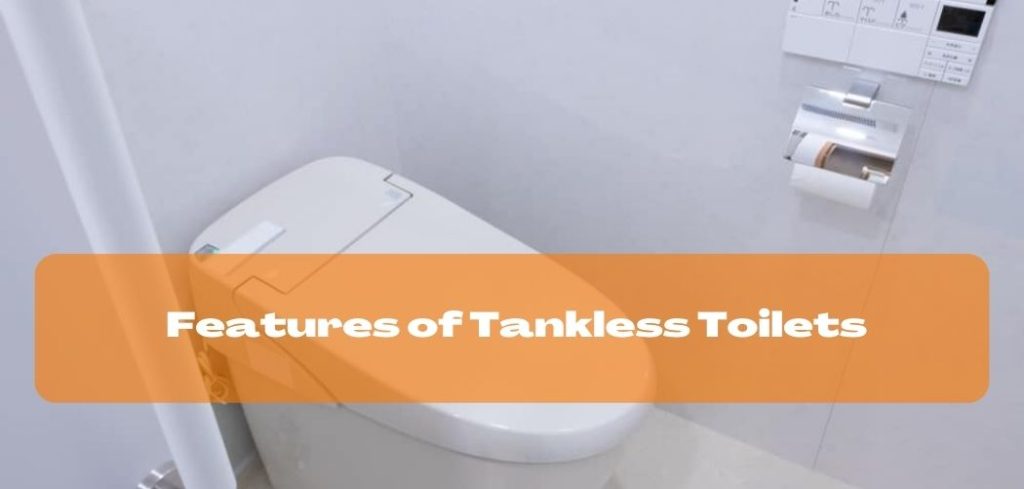
If you’re searching for a tankless toilet for your house, you’ll quickly discover that there are a plethora of options available. Some versions, for example, allow users to alter the amount of water used in a flush based on the kind of waste.
To put it another way, you may select between a full flush for solid waste and a half flush for liquid waste. This is a fantastic tool for water-saving that is also available on certain traditional tank toilets. It is a feature that will likely be accessible on more toilet types in the future years.
Aesthetics are another benefit of high-performance tankless toilets. They usually have a sleek, modern form that takes up less room than tank-style toilets and is less visible. They can also be significantly quieter than ordinary toilets if noise-reduction equipment is used.
They’re also advertised as having better bowl cleaning performance. In other words, the strong flushes are meant to keep any waste from lingering in the bowl.
Benefits of Tankless Toilets
A tankless toilet is much smaller than a typical toilet that has a cistern or tank. Imagine not having the tank, and you’ll get an idea of how cool that would be. Since there’s no tank, a tankless toilet may be installed nearly everywhere.
The toilet is undoubtedly more fashionable than a regular toilet because it is tankless. It will improve the appearance of your bathroom, if not your entire home.
A tankless toilet does not waste water by storing it in a tank. Tanks can store up to three gallons of water in most cases, and many tanks may hold much more. A tankless toilet does not keep water in a tank, so you may use that water for other things.
A tankless toilet can also help you conserve water by having dual flush capabilities that allow you to flush liquid waste with far less water.
Tankless toilets do not have as many problems as traditional toilets. Consider the valves, floating balls, and inlets that require regular maintenance and, if necessary, replacement. There will be no such issues with a tankless toilet.
Tankless Toilet problems
Wall-hung toilets are often more expensive than regular or conventional toilets. Even if we consider the fact that a tankless toilet can help us save money on our water bill, we should pause to consider our options before making a decision.
Keep in mind that wall-hung toilets need a lot of force from water to work correctly. These toilets are commonly seen in big business and public facilities for this reason. For example, they are seen in shopping malls or airports that can handle the enormous pipes required to function at such high-water pressure.
Of course, it’s possible that the plumbing in your home isn’t capable of handling this kind of pressure.
Unlike regular or conventional toilets, which can be installed by anybody, the tankless toilet is more complicated and requires the assistance of a qualified expert. Since wall-hung toilets are intricate and difficult to install, the plumber must first open the wall to have access to the building’s plumbing.
Tankless Toilet Troubleshooting : No Tank Toilet won’t flush.
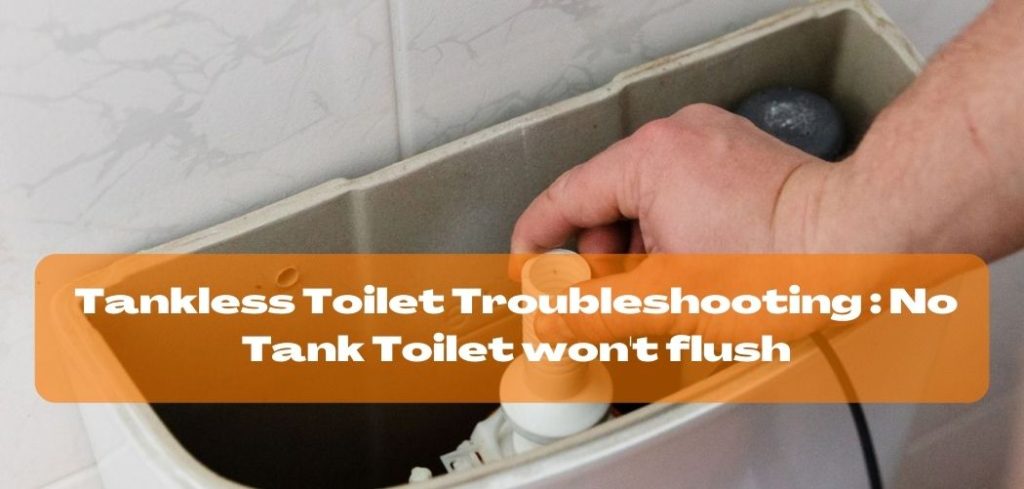
If you have a tankless toilet and it won’t flush, don’t wait too long. It could be something as simple as a bad flapper valve which will refill the tank in a short time. You can change the bad flapper valve with the new one in just a few minutes by yourself.
If it’s not working after that. It could also be an airlock in the bowl which will allow water to leak into the toilet but not out, thereby causing overflow and waste. If it is an airlock, don’t panic because it can often be fixed easily with a few adjustments to your installation process – even if you need to replace your entire toilet system or bowl kit.
But remember one thing, If you think you can’t do it yourself properly then jus calls a plumber without wasting time they will fix your toilet properly as it was before.
Water Conservation with Tankless Toilets
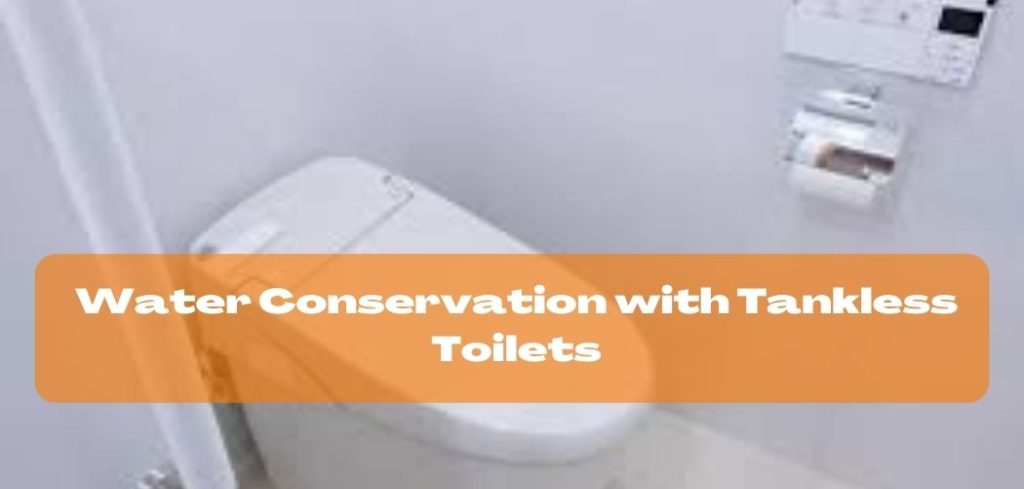
There is no tank with a tankless toilet, as water must not be reserved to flush. The water is linked directly to the existing plumbing system of your home so that when the toilet is flushed, water enters the bowl at high pressure and pumps wastewater away from the effluent.
An electric pump integrated inside the toilet supports the flush rather than gravity.
The greatest benefit of toilets without tanks is their effectiveness in helping homeowners save water. Some versions also provide a dual flush option to further reduce usage, making it unparalleled by traditional toilets.
Tankless Toilet Pros and Cons
There are several advantages and disadvantages of using tankless toilets. Tankless toilets may not be for every home even though they have a lot of advantages. Here’s a rundown of the pros and cons.
Pros:
- They utilize less water: Toilets use less than 2 gallons of water per flush for the tankless versions. Dual-flush models utilize much less water than conventional models.
- Ideal for the little bathrooms: Tankless toilets might be an excellent choice for guests with small bathrooms because they’re installed on the wall. Moreover, for individual comfort, you may put it at any height.
- Modern design and customization options: Tankless toilets have a smooth design that may upgrade your bathroom immediately.
Cons:
- More expensive than traditional toilets: Toilets without tanks are often much more expensive than conventional ones. Tankless versions are not the ideal solution for a frugal person or who wants to use an emergency toilet since their cost is high.
- Power Dependent toilets: Toilets without tanks require electricity. Although this is no problem regularly, it means your toilet won’t work if a power failure occurs.
FAQ:
Q. How to flush a tankless toilet without water?
Try filling a water bucket. Lift the lid and the seat of the toilet. Dump the water quickly enough into the toilet bowl to begin flushing. For more details, you can read our article in-depth to know how to flush a tankless toilet without water.
Q. How to fix a tankless toilet?
The shut-off valve must be at the angle stop on the feeding tube in front of the actual valve. Release the anti-tamper cap at the end of the stop to switch off the water using a normal screwdriver. You can have a plumber fix the valve once you have done that.
Q. Why does my tankless toilet leak?
Calcium may have been incorporated into the valve. Turn off the water, then open the valve and remove the diaphragm. This frequently resolves the issue.
One indication that foreign matter is in the assembly is that the water stops flowing if you can repair the problem by tapping on the valve itself. Often this is just a temporary solution.
Q. How much do tankless toilets cost?
Tankless toilets are costlier than toilet tanks, as already indicated. A simple tankless toilet can cost between several hundred to a couple of thousand dollars, depending on its construction and features
Q. How to shut off water to a tankless toilet?
Using a wrench, you need to screw the opening of the flushometer off. Depending on which side the flushometer is facing, there should be a side where you should rotate it.
Conclusion:
You must decide wisely whether you should install toilets with no tank or not. You can install pipes that can satisfy the requirements of tankless toilets while building a new home. But it may not be a smart idea to substitute your old toilet with a tankless toilet.
Your pipes can be damaged by a wrong supply line for tankless toilets. Your toilet might also be damaged. Refitting or rehabilitating the pipes to allow tankless toilets may be quite costly.
Tankless toilets are costly since they aren’t produced by too many producers. High water pressure and dependable electricity are also required for tankless toilets. So, choose wisely!


